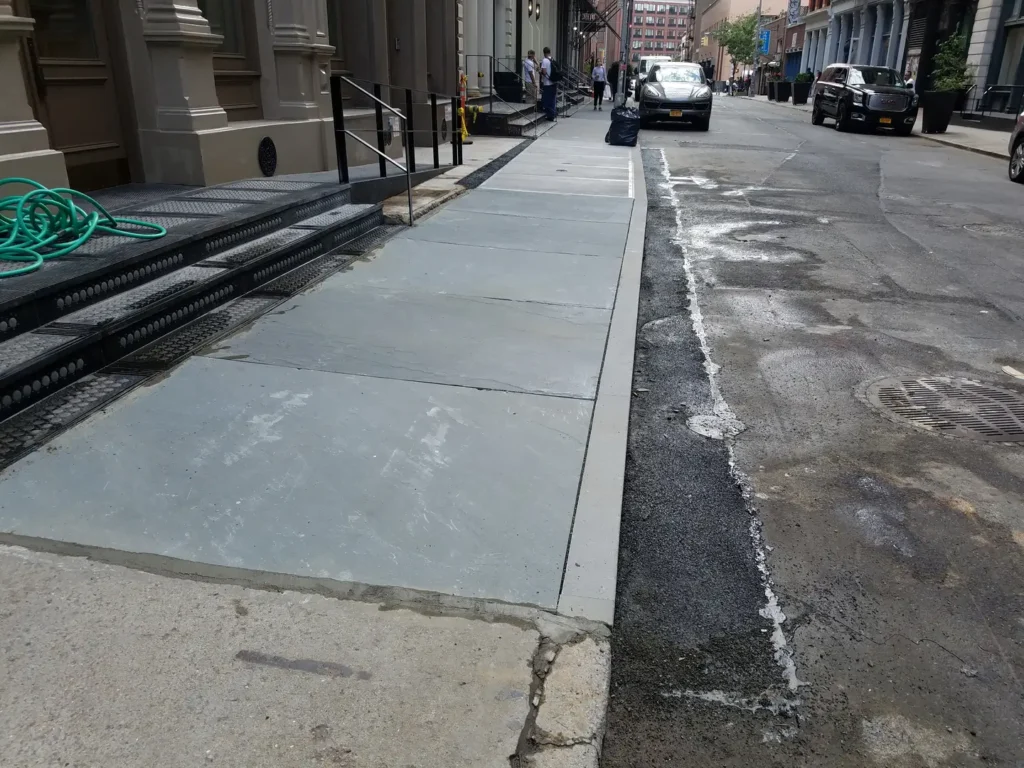Nobody wants to open their mail and find a sidewalk violation notice staring back at them. Yet, thousands of NYC property owners face this exact situation every year. That cracked concrete slab in front of your building? The city thinks it’s your problem, and they’re coming for your wallet. But here’s the truth: you don’t have to accept defeat. Fighting ECB violations is entirely possible when you know the right moves.
Understanding Your Violation
Before you panic, understand what you’re dealing with. The Environmental Control Board handles these cases, and they’re not as scary as they seem. Most sidewalk violations fall under two categories: trip hazards (anything over 1.5 inches) and general deterioration. The fines can sting—starting at $300 for initial violations and climbing higher for repeat offenses.
Here’s what matters:
- Documentation is everything: Photos, maintenance records, and weather reports can become your best defense
- Timing counts: You typically have 45 days from the violation date to request a hearing
- The violation code tells a story: Different codes carry different weights and defense strategies
Common Defense Strategies
Fighting back requires strategy, not just hope. Property owners who successfully contest violations share one thing: preparation. The city must prove you’re responsible, which isn’t always straightforward.
Consider these winning approaches:
- Prove the city caused it: Tree roots from city-planted trees damage countless sidewalks—this shifts liability
- Challenge the measurements: If the defect doesn’t meet the 1.5-inch threshold, you’ve got grounds for dismissal
- Show recent repairs: Completed work before the violation date can eliminate penalties
Professional representation matters here. Sidewalk violation specialists typically charge between $300-$1,500 depending on case complexity, but they can save you thousands in fines and repair costs that can exceed $10,000 for extensive damage.
The Hearing Process
Think of your ECB hearing as your courtroom moment, minus the drama. You’ll present your case to an administrative law judge who’s heard it all. Dress professionally, speak clearly, and stick to facts. Emotional appeals about unfair treatment rarely work; evidence does.
Your presentation should include:
- Physical evidence: Photos comparing the violation site to acceptable city sidewalks
- Expert testimony: Engineers or contractors can provide professional assessments
- Legal precedents: Similar dismissed cases strengthen your argument
Most hearings last 15-30 minutes. The judge issues decisions within 60 days, though many property owners receive rulings faster. If you lose, appeal options exist, but the window closes quickly—typically 30 days from the decision.
When to Settle vs. Fight
Not every battle deserves a war. Sometimes accepting responsibility and negotiating repair terms makes more sense than fighting. If the damage is obvious, extensive, and clearly your responsibility, settling can reduce penalties. The city often works with property owners who show good faith.
However, if you’ve maintained your sidewalk diligently, if city trees caused the damage, or if the measurements seem questionable, fight back. These ecb violations aren’t automatic convictions—they’re accusations requiring proof.
Take Control of Your Case
Sidewalk violations feel overwhelming, but you’re not powerless. Whether you choose to fight or settle, acting quickly protects your interests and your bank account. Don’t let fear or confusion cost you thousands in unnecessary fines.
Need expert guidance? The professionals at NYC Sidewalk Violations specialize in fighting unfair violations and navigating the ECB process. They’ve helped countless property owners dismiss violations and reduce penalties. Get your free consultation today and discover your best path forward.

